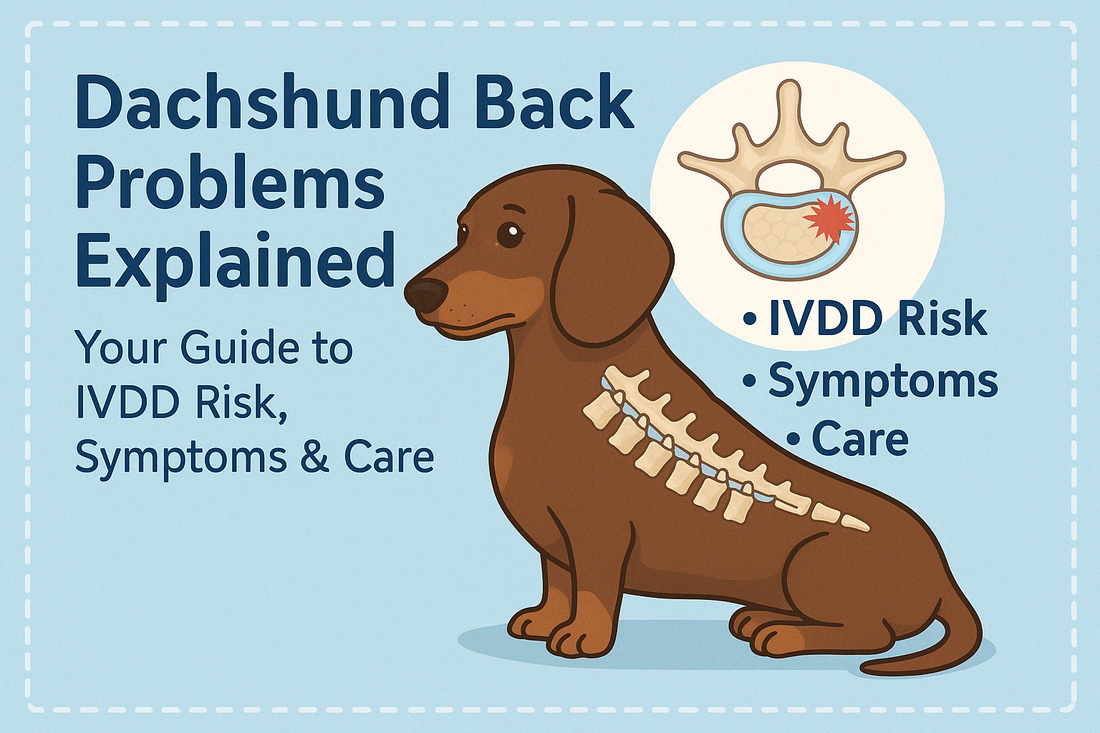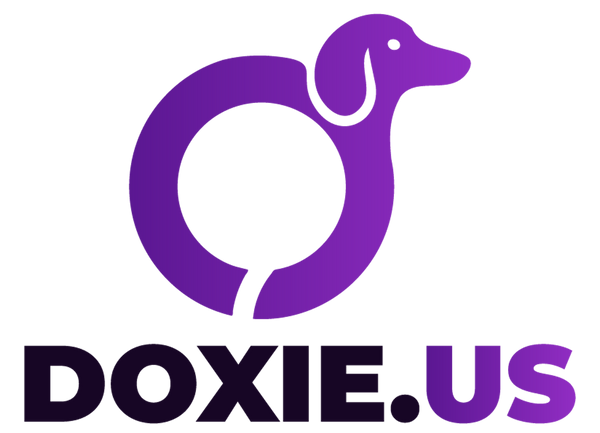
Dachshund Back Problems Explained: Your Guide to IVDD Risk, Symptoms & Care
Compartir
1. Why Your Dachshund's Back Deserves Special Attention: The IVDD Risk
The Dachshund, beloved for its unique long body and short legs, faces a significantly elevated risk of Intervertebral Disc Disease (IVDD), affecting approximately one in four. This predisposition stems from chondrodystrophy, the genetic condition responsible for their characteristic physique, causing premature degeneration of the spinal discs. Understanding this inherent risk is crucial for responsible ownership, enabling early recognition of signs and proactive risk reduction.
2. Decoding IVDD: What Every Dachshund Owner Needs to Know
IVDD involves the degeneration of the intervertebral discs, the cushions between the vertebrae. In Dachshunds, the common Hansen Type I IVDD occurs when the hardened inner disc material ruptures through the weakened outer layer, often suddenly, compressing the spinal cord. This compression can lead to pain, inflammation, nerve damage, weakness, and even paralysis. The genetic link via chondrodystrophy explains why this breed is so susceptible, with degeneration often starting early in life, leading to potential issues between 3 and 7 years of age.
3. Is My Dachshund in Pain? Recognizing the Subtle and Serious Signs of IVDD
Early detection is vital. Be alert for pain indicators like yelping, reluctance to move or jump, hunched posture, shivering, sensitivity to touch, decreased appetite, or unusual quietness. Neurological signs include weakness, incoordination, dragging paws ("knuckling"), inability to stand or walk, and paralysis. Bladder and bowel issues like incontinence or difficulty eliminating can also occur. The location of the herniation (neck, mid-back, lower back) influences the specific symptoms. Veterinarians use a grading scale (1-5) to assess severity, guiding treatment and prognosis. Even subtle behavioral changes can signal underlying pain and should not be dismissed.
4. Behind the Back Problems: Causes and Triggers of IVDD in Dachshunds
The primary cause is the genetic predisposition linked to chondrodystrophy. While degeneration is gradual, acute herniations are often triggered by high-impact activities like jumping, running with sudden stops, stair climbing, or trauma. Obesity significantly exacerbates the risk by placing extra strain on the spine. While genetics can't be altered, managing weight, controlling exercise, modifying the home environment (ramps, non-slip surfaces), and using proper handling techniques are crucial for risk reduction.
5. Getting a Diagnosis: How Vets Identify IVDD
Prompt veterinary attention is crucial. Diagnosis involves a thorough physical and neurological exam, including pain assessment, reflex checks, and gait evaluation. Imaging is essential: X-rays can show calcification or vertebral changes, but advanced imaging like MRI (best for soft tissues) or CT (good for bone and calcification) provides a definitive diagnosis, locating the herniation and assessing spinal cord compression. This precise diagnosis informs treatment decisions and rules out other spinal issues.
6. Paths to Healing: IVDD Treatment Options for Your Dachshund
Treatment options include Conservative Management (strict crate rest, pain medication, anti-inflammatories) for mild to moderate cases (Grades 1-2) and Surgical Intervention (to remove the compressing disc material) for more severe neurological deficits (Grades 3-5), especially with loss of deep pain sensation. Surgery offers higher success rates for regaining walking ability in severe cases, particularly if deep pain sensation is still present. However, both approaches require significant owner commitment and time for recovery. Prognosis varies based on the IVDD grade at treatment.
7. The Road to Recovery: Rehabilitation and Life After an IVDD Episode
Recovery is a marathon, not a sprint. Strict crate rest is essential initially for both surgical and non-surgical cases. Physical therapy and rehabilitation, ideally with a canine rehabilitation professional, are vital for regaining function. Modalities include manual therapies, therapeutic exercises, hydrotherapy, and laser therapy. Home care involves assisting with mobility, managing incontinence if present, preventing pressure sores, and administering medications. Assistive devices like slings or wheelchairs can improve quality of life for dogs with persistent challenges. Long-term management involves ongoing vigilance and preventive measures.
8. Protecting Your Pup: Practical Tips to Reduce IVDD Risk
While prevention isn't foolproof, owners can significantly reduce risk by maintaining a healthy weight, engaging in low-impact exercise (leashed walks, swimming), modifying the home with ramps and non-slip surfaces, using a harness instead of a neck collar, and handling their Dachshund with proper support. Regular vet check-ups are also important. Moderate, controlled activity is better than either high-impact stress or complete inactivity for spinal health.
9. Providing Extra Spinal Support: The Doxie.us Back Brace
For Dachshunds predisposed to or experiencing back issues like IVDD or arthritis, the Dachshund Back Support Brace for IVDD Arthritis & Pain Management by Doxie.us can be a valuable supportive tool. Specifically designed for the breed's unique anatomy, this brace offers Professional Grade Support with its 6 integrated metal spring strips. These strips provide robust stabilization to the spine, helping to maintain proper alignment, alleviate pressure on the vertebrae and discs, and minimize painful micro-movements.
By stabilizing the spine and reducing the load, the Doxie.us brace can help ease back pain associated with IVDD flare-ups or chronic conditions. Constructed from breathable, high-quality materials for comfort during extended wear, it also features a reflective design for added safety during walks. Available in multiple sizes, it aims to improve mobility and balance, potentially reduce the risk of re-injury during activity, and allow dogs with back issues to remain more active and comfortable.
While not a cure, the Doxie.us back brace can be a helpful component of a comprehensive management plan, providing support during conservative treatment, in the post-operative recovery phase (always following veterinary advice), or for ongoing support for chronic spinal pain. Consider exploring this product at https://doxie.us/products/dachshund-back-support-brace and discuss its suitability for your Dachshund with your veterinarian or a canine rehabilitation therapist.
10. A Happy Back, A Happy Dachshund: Final Thoughts
Owning a Dachshund is a joy, and understanding their spinal health is key to a long and happy life together. By being vigilant, acting promptly at the first signs of trouble, pursuing informed treatment and rehabilitation, and consistently implementing preventive measures, you can significantly support your beloved companion's back health and ensure many happy years. Partnering with your veterinarian and exploring supportive products like the Doxie.us back brace can make a real difference in managing IVDD risk and providing comfort for your "sausage dog."
